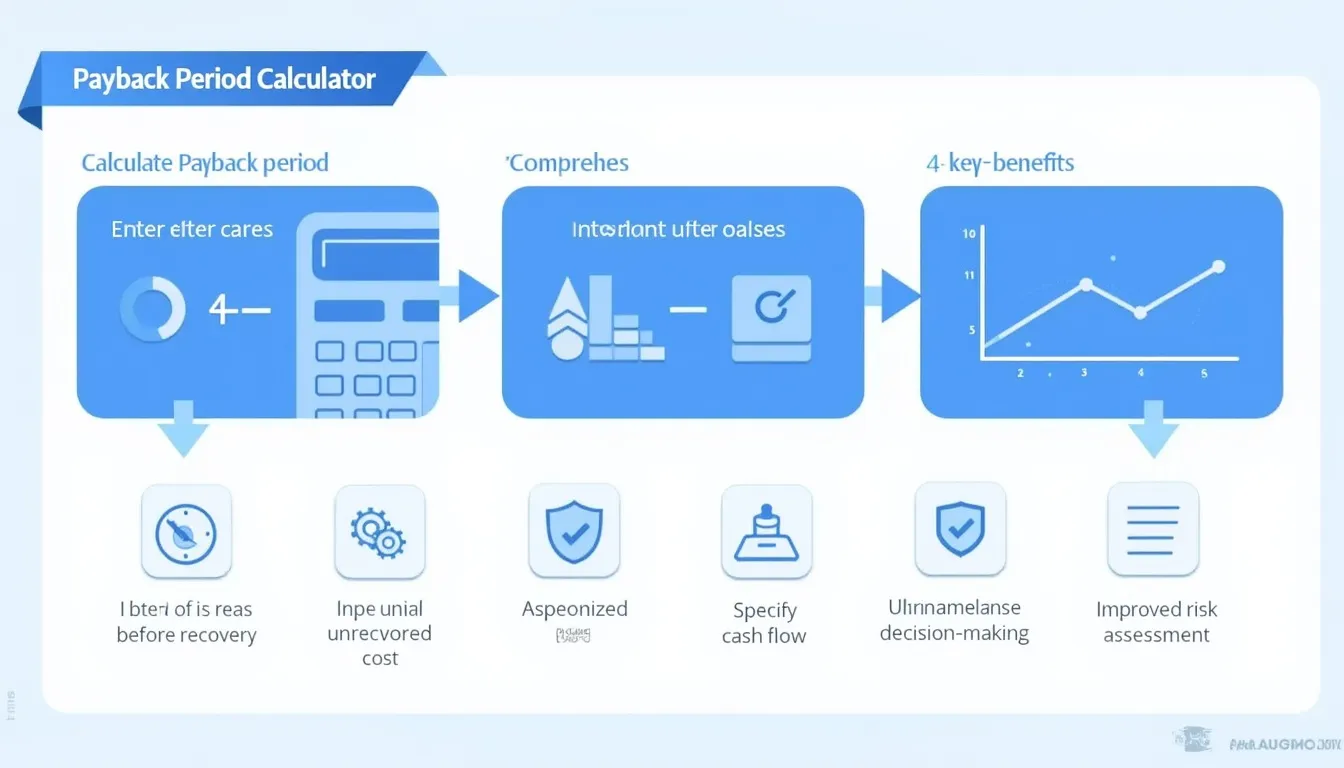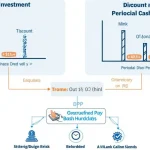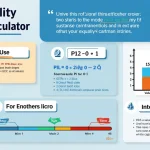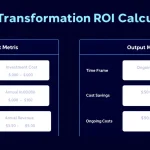Payback Period Calculator
Is this tool helpful?
How to use the tool
Step 1 – Years Before Recovery
Type the number of full years before cash inflows begin. Example inputs: 4 or 1.
Step 2 – Unrecovered Cost at Start of Year (USD)
Enter the amount still to be recouped when recovery starts. Example inputs: 240000 or 90000.
Step 3 – Cash Flow During the Year (USD)
Insert the expected annual net cash inflow. Example inputs: 60000 or 45000.
Step 4 – Calculate
Press “Calculate”. The tool displays the payback period in years.
Formula used
$$ \text{Payback Period}= \text{Years Before Recovery}+ rac{\text{Unrecovered Cost at Start of Year}}{\text{Cash Flow During the Year}} $$
Worked examples
- Example A: 4 years + 240 000 ÷ 60 000 = 4 + 4 = 8 years.
- Example B: 1 year + 90 000 ÷ 45 000 = 1 + 2 = 3 years.
Quick-Facts
- 61 % of CFOs rank payback period in their top three metrics (Deloitte CFO Signals, 2023).
- Manufacturing firms aim for 3–5 year payback windows (Harvard Business Review, 2022).
- A two-year payback can raise project IRR by roughly 8 percentage points (McKinsey Energy Insights, 2021).
- IFRS requires recoverability tests for assets with long paybacks (IFRS IAS 36, 2021).
FAQ
What is the payback period?
The payback period is the time your project needs to recoup its initial outlay through net cash inflows (Investopedia, URL).
How does the calculator work?
It adds the pre-cash-flow years to the fraction of unrecovered cost over annual cash flow, delivering an exact recovery time in years.
Which inputs do I need?
You provide three numbers: years before cash starts, unrecovered cost at that point, and a single-year cash flow estimate.
Why does the tool assume constant cash flow?
Simplifying to a steady annual amount keeps the model transparent and comparable across projects (Corporate Finance Institute, 2023).
What is a “good” payback period?
Firms in fast-moving sectors often target ≤3 years, while infrastructure tolerates 7 + years (World Bank Infrastructure Report, 2022).
How does payback differ from NPV?
NPV discounts all future cash flows to present value; payback ignores time value, focusing only on recovery speed.
Can I use it for delayed cash flows?
Yes—enter the delay as Years Before Recovery and the remaining cost accordingly; the formula still holds.
Does it account for inflation?
No. “An asset is recoverable when future economic benefits exceed its carrying amount” (IFRS Conceptual Framework, 2021). Adjust cash flows externally for price changes before using the calculator.
Important Disclaimer
The calculations, results, and content provided by our tools are not guaranteed to be accurate, complete, or reliable. Users are responsible for verifying and interpreting the results. Our content and tools may contain errors, biases, or inconsistencies. We reserve the right to save inputs and outputs from our tools for the purposes of error debugging, bias identification, and performance improvement. External companies providing AI models used in our tools may also save and process data in accordance with their own policies. By using our tools, you consent to this data collection and processing. We reserve the right to limit the usage of our tools based on current usability factors. By using our tools, you acknowledge that you have read, understood, and agreed to this disclaimer. You accept the inherent risks and limitations associated with the use of our tools and services.







